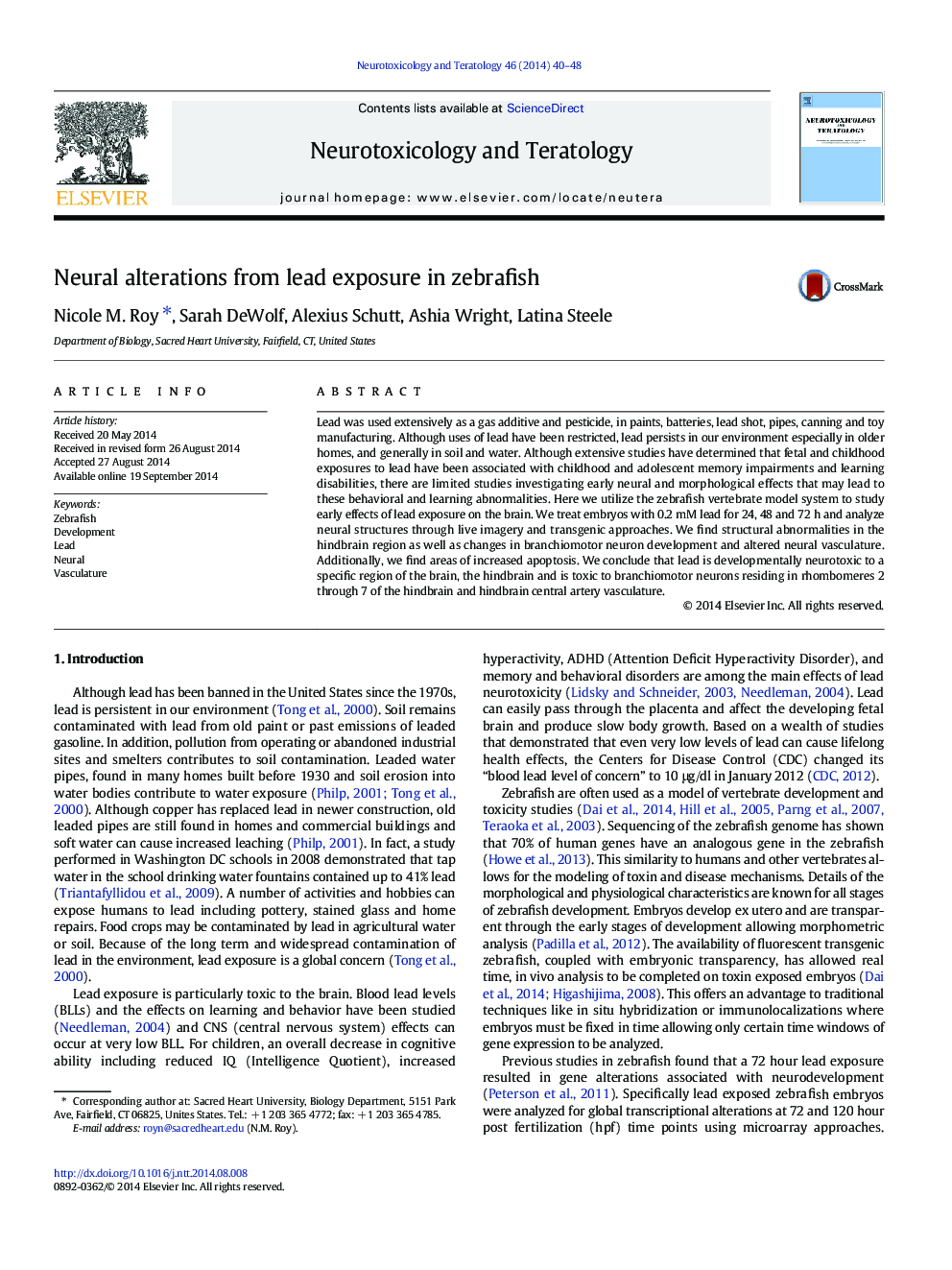| Article ID | Journal | Published Year | Pages | File Type |
|---|---|---|---|---|
| 2590939 | Neurotoxicology and Teratology | 2014 | 9 Pages |
•Lead treatment alters neural morphology, hindbrain branchiomotor neurons, neural vasculature and apoptosis•We demonstrate changes in gross hindbrain morphology and hindbrain branchiomotor neuron development by 72 hrs•We demonstrate changes in neural vasculature and increased apoptosis by 72 hrs
Lead was used extensively as a gas additive and pesticide, in paints, batteries, lead shot, pipes, canning and toy manufacturing. Although uses of lead have been restricted, lead persists in our environment especially in older homes, and generally in soil and water. Although extensive studies have determined that fetal and childhood exposures to lead have been associated with childhood and adolescent memory impairments and learning disabilities, there are limited studies investigating early neural and morphological effects that may lead to these behavioral and learning abnormalities. Here we utilize the zebrafish vertebrate model system to study early effects of lead exposure on the brain. We treat embryos with 0.2 mM lead for 24, 48 and 72 h and analyze neural structures through live imagery and transgenic approaches. We find structural abnormalities in the hindbrain region as well as changes in branchiomotor neuron development and altered neural vasculature. Additionally, we find areas of increased apoptosis. We conclude that lead is developmentally neurotoxic to a specific region of the brain, the hindbrain and is toxic to branchiomotor neurons residing in rhombomeres 2 through 7 of the hindbrain and hindbrain central artery vasculature.
